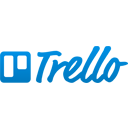Overwhelmed? Master the art of task planning to triumph!
At work, task planning is essential: it gives you a clear idea of what you have to do, in what order, and without omissions!
It's very important to be organized when carrying out your various tasks, especially in project management.
This way, you'll know where you stand, promote teamwork and be able to communicate your progress to your management, partners and customers.
We'll guide you through this crucial stage, combining organization, collaboration and productivity.
Task planning: definition and challenges
The aim of planning is to determine and schedule the tasks to be carried out within a project, and then to estimate their duration and the resources required to complete them.
There are several techniques for breaking down a project into tasks and scheduling them.
Task management involves a series of actions:
- identifying tasks, thanks to the project breakdown,
- task prioritization: scheduling tasks in relation to one another,
- task scheduling: distributing tasks over time,
- task distribution: allocation of resources.
Interconnected, these actions sometimes require you to move on to the next stage and then readjust. For example, constraints in the allocation of human resources may lead to a review of planning.
Planning is of course closely linked to the time factor (when?), but also to :
- objectives (what?),
- stakeholders (who?),
- methods and tools (how?),
- constraints:
- resources are often limited (manpower, materials);
- project duration must be as short as possible;
- the cost must be as low as possible and within the initial budget;
- quality must be optimal and in line with forecasts.
Thus, 5 essential parameters must be taken into account:
- quality,
- cost
- lead time
- performance,
- risk.
The importance of planning
Task planning is essential, as it enables us to :
- define the logical sequence of tasks and their timing,
- express the need for resources or means,
- analyze workloads,
- take account of risk factors (constraints outside the project),
- compare actual progress with forecasts,
- analyze the consequences of any discrepancy between planned and actual progress,
- identify "latest" start and "earliest" finish dates for tasks,
- simulate optimistic, pessimistic or probable hypotheses,
- prioritize tasks.
The 4 stages of planning
Step 1: Identify your goals and the tasks required to achieve them
Before jumping in headlong, take the time to define where you're going.
A clear objective means a well-defined project. And a clear objective means a well-defined project.
📌 Think about these questions:
- what is the expected deliverable?
- what resources are available?
- who's doing what, and why?
Then break down each project function or stage into concrete tasks. The more precise you are, the more productive your project management becomes .
Step 2: Define the priority of each task and assign it a due date
Not all tasks carry the same weight. Some are urgent, others simply important.
Prioritize them, using the Eisenhower matrix for example (explained later in this article).
Then add realistic due dates to each task.
Think about the dependencies between tasks. There's no way you're going to lay the tiles before you've poured the slab! 😉
Step 3: Assign tasks
Effective task planning relies on a good division of labor.
Assign each action to a team member according to :
- availability ;
- skills ;
- current workload.
A good management tool helps you visualize all this. What's more, personal commitment grows when you know exactly what you have to do and why.
Step 4: Track task progress
Planning is good. Monitoring is even better.
Without real-time visibility, your beautiful schedule risks becoming a jigsaw puzzle.
Set up clear progress tracking. Use a dashboard, a Gantt chart or a more visual solution like Trello or Asana.
🎯 The objective?
- identify delays or blockages ;
- readjust the workload if necessary;
- keep everyone in the same boat (and on the right track).
Task management
Task breakdown and scheduling
To accomplish an impossible task, we break it down into small chunks of simply very difficult tasks, which we then divide into horribly arduous tasks, which we in turn segment into delicate jobs and so on.
Terry Pratchett, auteur anglais
That's the secret! To improve project feasibility, you need to make tasks more accessible and less frightening, to mobilize and motivate employees. Each completed task becomes a comforting achievement.
Breaking down tasks into manageable chunks also makes it easier to estimate durations and costs, and eliminates many of the risk factors associated with projecting too far into the future. This is what we call the tunnel effect: it's impossible to assess the workload in any other way.
Ideally, the task to be broken down is quick (one day, for example) and "atomic": it's a project unit, and can be carried out on its own.
If it depends on other tasks and its contours are too blurred, you'll have to rethink the breakdown. Several methods can help you do this.
Mind mapping
This mind-mapping method, which enables you to organize your mind and make well-thought-out decisions as you work through a problem, can be used individually or in a group.
The main objective is inscribed in the center, giving rise to branches of key words that are created as you go along, from which other ideas, tasks and constraints flow. The diagram goes from the general (in the center) to the specific.
Project manager, project team, your work doesn't stop there: now that the various tasks have been clearly identified, you need to establish their interconnection (or interdependence).
Tasks can be :
- successive,
- simultaneous,
- convergent.
But which ones should you carry out first, to ensure a smooth, logical sequence?
Two criteria come into play:
- the importance of the task in the overall project,
- its degree of urgency.
Work Breakdown Structure (WBS)
The Work Breakdown Structure (WBS) is one of the best-known operational methods for breaking down a project into manageable units.
It's a hierarchical mapping that starts with the major activities to be carried out, i.e. the main deliverables and the tasks to be performed.-that is, from the main deliverables and sub-deliverables (hereinafter parent project and child tasks) to the tasks required to complete them and the sub-tasks.
To do this, you need to :
- have carried out an exhaustive inventory of all deliverables and tasks upstream,
- identify interdependent tasks linked to well-defined deliverables and sub-deliverables (organized above in columns).
The MoSCoW method
In agile project management, this prioritization method focuses precisely on the importance of the task and its impact on project completion.
There are :
- Must have: indispensable,
- Should have: important,
- Could have: low impact,
- Won't have but would like: optional.
The Eisenhower matrix
It prioritizes importance over urgency.
What's important is rarely urgent, and what's urgent is rarely important.
Dwight David Eisenhower
NB: The same type of matrix can be used with the "gain" and "effort" criteria:
For the more scientific, there's another method: Monte-Carlo simulation.
This is a computerized mathematical technique which proposes several possible schemes and their probabilities of realization, depending on the decisions taken. All the consequences of intermediate choices are included in the calculation.
Multiplying criteria ( scoring)
- List the tasks to be performed, in any order;
- If you have 5 tasks, assign urgency and importance ratings of 1 (minimum) to 5 (maximum) to each one;
- Multiply the two scores;
- In the priority column, the most urgent task is the one with the highest score, and so on.
| Tasks (unsorted) | Importance | Urgency | X | Priority |
| Task A | 2 | 4 | 8 | 2 |
| Task B4 | 1 | 5 | 5 | 4 |
| Task C | 3 | 2 | 6 | 3 |
| Task D | 4 | 3 | 12 | 1 |
| Task E | 5 | 1 | 5 | 4 |
It also works with the "gain"/"effort" criteria.
The PERT diagram
This diagram shows the connection between tasks.
The estimated time is used to establish the shortest route, but also to lead to the critical path method, which identifies the most critical, longest route to the goal.
This method, developed by Morgan Walker and James Kelley in 1957 for managing projects with a large number of tasks, is being called into question because it fails to take into account the human, budgetary, material and technological resources essential for realistic project planning.
Planning and task allocation
As with task breakdown and scheduling methods, these two phases are brought together under one heading, because they go hand in hand.
Numerous task planning tools are available. Here's a selection.
The critical chain method
To compensate for the shortcomings of the critical path method, many project managers prefer the critical chain method, as it takes into account :
- available resources and their levelling out,
- risk factors (hidden costs, delays, failures),
- priority conflicts due to the multitasking of employees, who cannot devote themselves fully to several tasks at the same time,
- the pooling of safety margins for critical tasks (project buffer).
In this article, you'll find quick, practical excerpts from training courses on PERT and critical chain methods.
The Gantt chart
The Gantt chart graphically presents the progress of tasks and their deadlines, with a list of activities (on the ordinate) and time units (on the abscissa).
Each task can be linked to :
- resources (human or material resources),
- connections (with other tasks),
- dates (start and end).
The Gantt chart (named after its creator, Henry Gantt) is widely used because it is :
- easy to use,
- easy to update,
- easily understood by experts and novices alike,
- highly visual,
- structuring,
- collaborative,
- dynamic.
Example 2:
At the same time, a task distribution table can be created, sometimes called the kifékoi?
It provides the project manager with a summary of the tasks to be carried out by all the parties involved, and the resources to be deployed to achieve them.
| Who? (actor) | Do what? (mission, task) | Who does it with? (experts, partners) | By when? (schedule) | How? (tools, resources) | Follow-up |
Job scheduling software solutions
Gone are the days of wall panels with gutters or T-plugs!
As for Excel, whose functionalities can be pushed as long as you master them, why not. But for novices and project managers who don't have time to waste, just skip it!
Excel is :
- time-consuming,
- not suited to collaborative working,
- not mobile,
- not easy to read when many tasks are planned.
Here's a quick look at Excel's task planner with the creation of a Gantt chart:
And now, welcome to the digital, collaborative and mobile age!
Some free task planning tools
Your Outlook or Gmail electronic agenda
Create tasks, with dedicated colors, recurrences, beginnings and endings. They'll then appear in your online calendar, viewable from your computer or smartphone, and send you reminders.
You can also invite people and add attachments.
It's better than Excel for collaboration, but it doesn't allow you to make diagrams, for example, nor to have an overview, customized reports, and so on.
Android and iPhone apps
Numerous to-do list-type applications exist, such as Wunderlist and Todoist. But their functionalities are rather basic. To get more, you often need to upgrade to the premium version.
Take Todoist, for example, which automatically detects certain key information in your language ("meeting every Monday") and automates the recurring task.
Other benefits include
- checklist,
- geolocated notifications,
- synchronization with iCal, Google Calendar, etc,
- free for 80 active projects.
The benchmark in open-source task management software: redmine
Fully configurable, Redmine adapts easily to the specific needs of your projects. You can create as many fields as you like in the form of tickets (action requests), so you can group them together and filter them quickly.
Like all open source software, it takes time to configure and requires in-house IT skills, but the tool is well worth the effort, adapting to your needs and constraints.
Redmine offers :
- unlimited number of users,
- secure login and password,
- an overview of all current projects,
- a roadmap,
- calendar and list views,
- creation of personalized lists,
- sharing with your team members,
- ticket creation with title, description, number and customizable fields,
- report generation (Gantt charts, burndown charts).

Redmine
Paid and pro task planners
Asana, collaboration at its heart
It's a task and project management software designed for collaboration and planning of medium-sized projects.
It offers a pleasant user and collaborator experience, with an intuitive interface and well thought-out functionalities.
In particular, it enables integration with numerous tools such as Redmine, Gmail, Outlook, Slack, Zapier and more.
Asana offers a free version for up to 15 users and a premium version from €5.75/month/user for small businesses.

Asana
Beesbusy, power made simple
Beesbusy is a French project management software ideally suited to companies with 20 to 300 users. Its promise: to make you more efficient in the planning and day-to-day management of your tasks and projects.
Beesbusy offers a free package with unlimited projects, lists and tasks for simplified organization, free of charge. For its paid packages, the publisher takes into account the fact that "not all users are active": occasional users are taken into account for a fairer sliding scale of charges.
Beesbusy's strengths in task planning include :
- visualization of tasks in a list, so you can manage them in groups, in Kanban mode,
- visual prioritization of tasks (they remain visible at the top of the list),
- a Gantt chart for each project, allowing you to plan for short or long durations, also available in multi-project view,
- the ability to easily break down the workload by resource, separately from the duration of the task, for a concrete view of the feasibility of the project within the expected timeframe,
- ease of use recognized by its users, who prefer it to Trello, thanks to specific attention to ergonomics.

Beesbusy
MeisterTask, agile and visual
MeisterTask is a highly intuitive task management tool for teams working in project mode. It adapts to all agile projects and work processes. It has a pleasant, customizable interface.
Combined with MindMeister, it lets you create and collaborate on mind maps.
MeisterTask also offers a free version, click on the link to see what's included.
It offers :
- creation and management of customizable dashboards,
- Kanban boards,
- editorial calendars,
- automation of certain tasks,
- easy integrations with the tools used by your team (Github, Office 365, G Suite, Outlook, Zapier, etc.),
- add documents,
- connection and dependency between tasks,
- customizable fields in each task, etc,
- a free mobile application for iPhone and iPad.

MeisterTask
The task planner on Windows 10
Microsoft Planner is part of the Office 365 suite.
It is often compared to Trello for its task scheduling:
- customizable columns,
- cards symbolizing tasks, movable from column to column.
It also allows :
- file sharing,
- discussions on work in progress,
- progress updates.
Trello, the creative tool
Trello is an application that lets you easily create visual spaces divided into steps to organize and track the progress of your projects seamlessly.
Very popular with creative teams, it offers a quick visualization of project progress using Kanban-inspired boards (post-it notes on a whiteboard).
Like Microsoft Planner, it's not suited to complex projects, but it's a good solution for simple task management.

Trello
How to choose your planning tool Comparison table
Not all tools are created equal. Some are cut out for complex project management. Others shine for their simplicity and immediate productivity.
The choice depends on your needs, your team and your working style.
Here's a quick comparison 👇 :
| Tool | Who is it for? | Key features | Free package | Price of entry |
|---|---|---|---|---|
| Asana | Collaborative teams | Task management, multiple views (list, table, calendar), Slack integrations | Yes | From €9.45 / month / user |
| Beesbusy | SMEs and agile project managers | Gantt, Kanban, load management, resource tracking | Yes | From €9.90 / month / user |
| MeisterTask | Visual & agile teams | Kanban workflow, automation, project customization | Yes | From €13.50 / month / user |
| Trello | Freelancers, creatives, small businesses | Kanban cards, checklists, Google Drive integration | Yes | From €4.30 / month / user |
| Redmine | Developers & technical projects | Open source, bug tracking, Gantt, wiki, multi-projects | Yes (free) | Free |
| Outlook / Gmail (calendar) | Solo or micro-teams | Reminders, recurrence, email and calendar integration | Yes | Free |
| iPhone / Android applications | Mobile users | To-do lists, reminders, push notifications, cloud synchronization | Yes | Free |
| Windows 10 scheduler | PC users | Automatic tasks, system schedule management | Included Windows | Free |
💡 Tip: test several tools before deciding. A good management tool should fit your way of working, not the other way around!
Stop working yourself to death!
There's no shortage of solutions to help you manage your tasks and optimize your work planning.
It's worth choosing one that allows you to integrate the tools your teams already use on a daily basis, such as Asana or MeisterTask, for exponential time-saving and highly intuitive management.
Test the free versions and share your experiences with us!